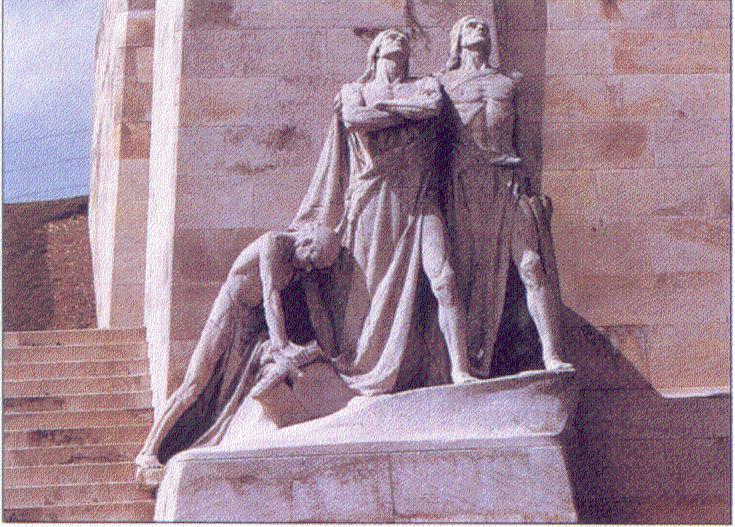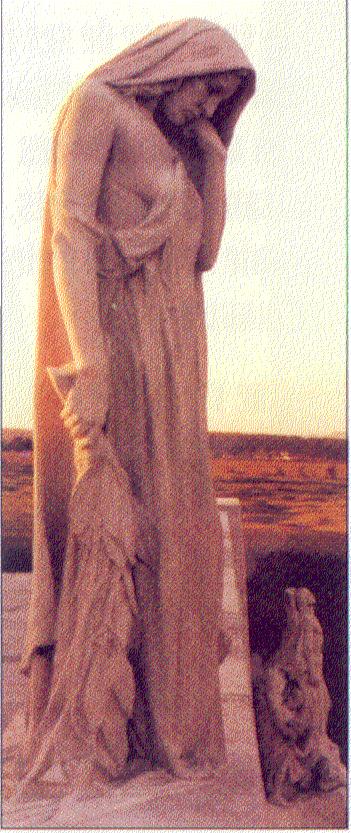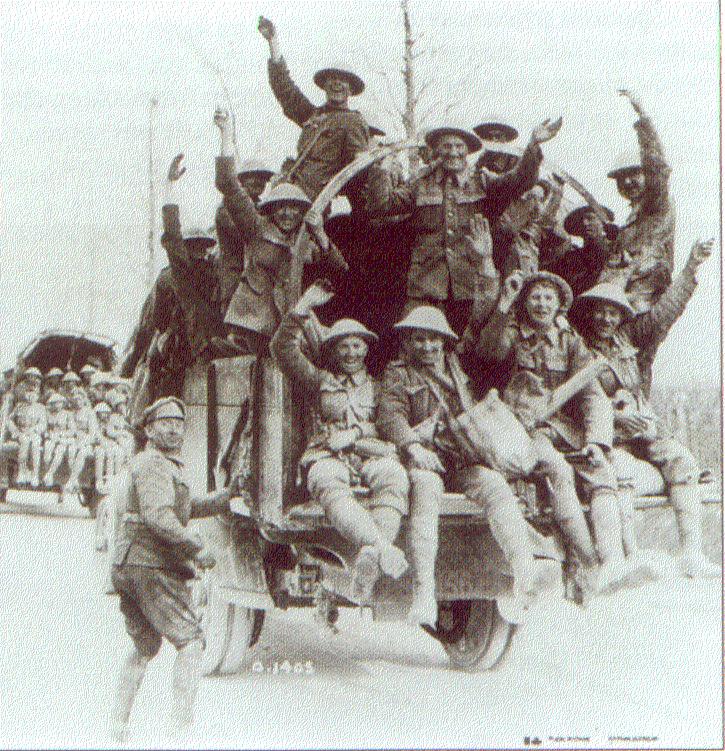|
|
The Monument
Today, the Vimy
Memorial does more than mark the site of the Battle of Vimy Ridge. It is a
monument to all Canadians who died or risked their lives for freedom and
peace in the First World War.
Designed by
Canadian sculptor and architect Walter Seymour Allward, the monument took 11
years to build. It rests on a bed of 11,000 tonnes of concrete, reinforced
with hundreds of tonnes of steel. The towering pylons and sculptured figures
contain almost 6,000 tonnes of limestone brought to the site from an
abandoned Roman quarry on the Adriatic Sea. The figures were carved where
they now stand from huge blocks of this stone.
A cloaked figure
stands at the front, or east side, of the monument overlooking the Douai
Plain. It was carved from a single, 30‑tonne block and is the largest piece
in the monument. This sorrowing figure of a woman represents Canada ‑a young
nation mourning her dead. Below is a tomb, draped in laurel branches and
bearing a helmet and sword.
On each side of
the front walls at the base of the steps are the Defenders: two groupings of
figures known as the Breaking of the Sword and Sympathy for the Helpless.
Above each grouping‑ is a cannon, silent now and draped in laurel and olive
branches ‑ a symbol of Victory and Peace.
Carved on the
walls of the monument are the nomes of
11,285
Canadians who were killed in France and whose final resting place is
unknown. Standing on the monuments wide stone terrace overlooking the broad
fields and rolling hills of France, one can see other places where Canadians
fought and died. More than 7,000 are buried in 30 war cemeteries within a
16‑kilometre radius of the Vimy Memorial. Altogether, 66,655 Canadians died
in the First World War.
The twin white
pylons, one bearing the maple leaves of Canada, the other the fleur-de‑lis
of France, symbolize the sacrifices of both countries. At the top are
figures representing Peace and Justice, with Truth, Knowledge, Gallantry and
Sympathy below them. Around these figures are shields of Canada, Britain and
France. Large crosses adorn the outside of the pylons. In the centre, at the
base of the pylons, a young dying soldier, the Spirit of Sacrifice, throws
the torch to his comrades. 'Iwo other mourners ‑ a man and a woman ‑ recline
on each side of the steps on the west side of the monument.
|
|




